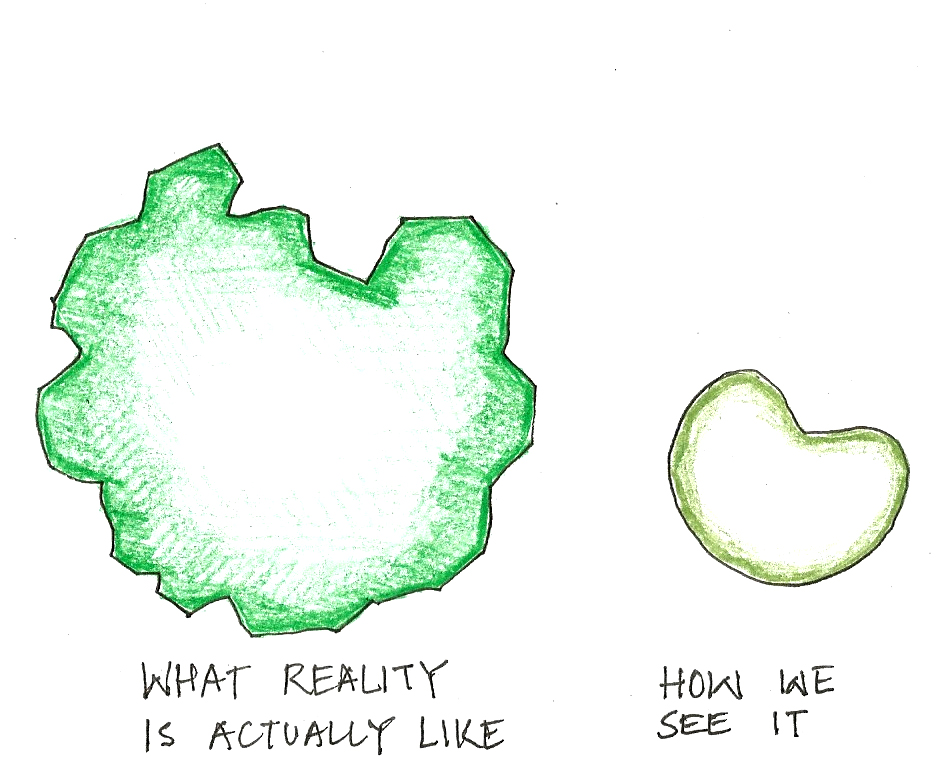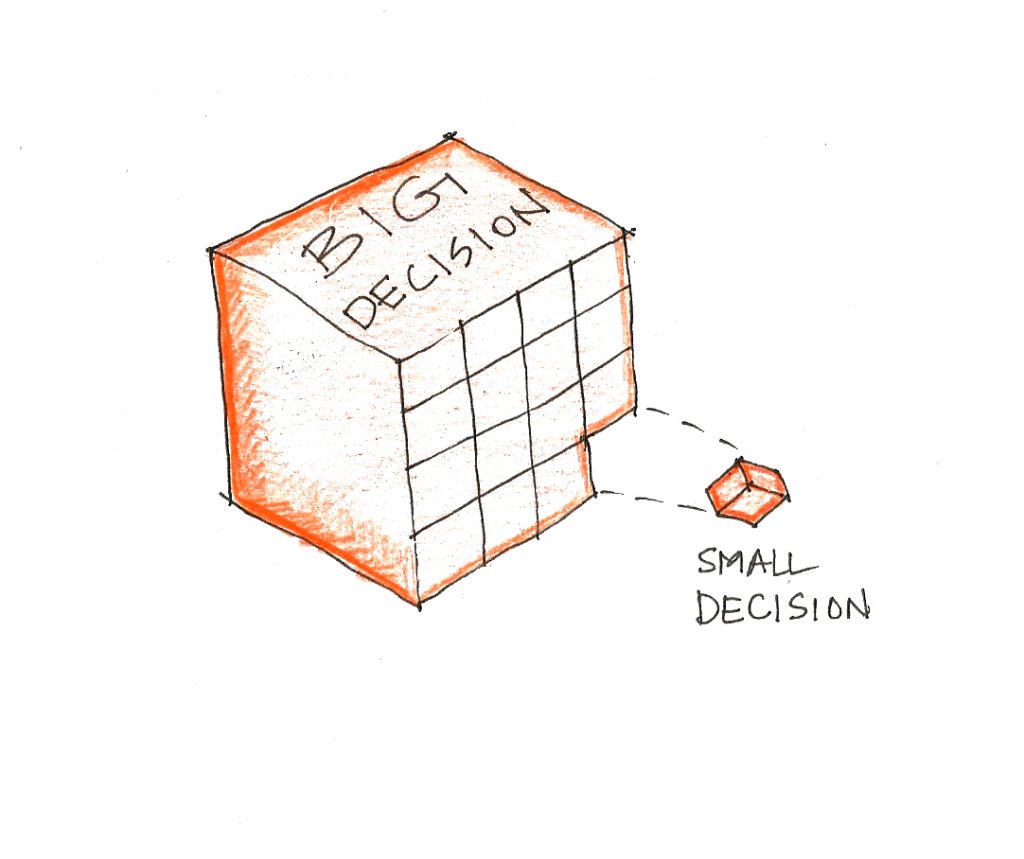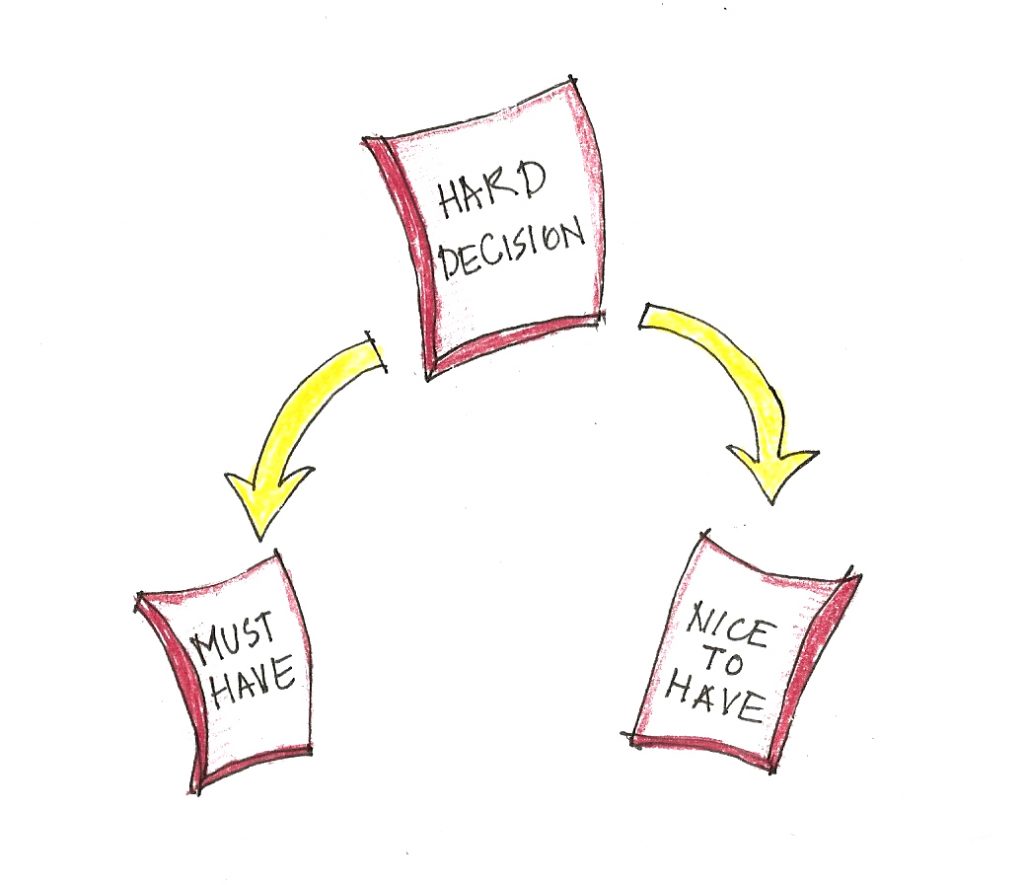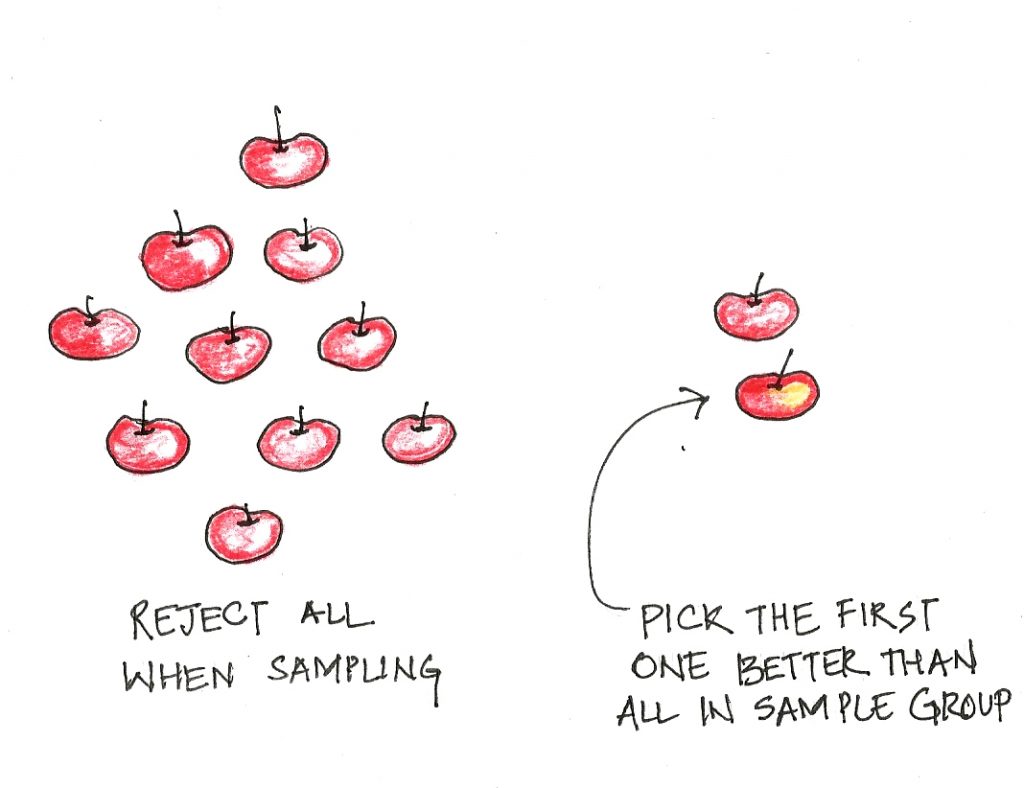Question: Sometimes it feels like there are just too many choices to make? Every step leads to a million more possibilities? How can you make decisions?
It’s often easy to frame a decision when there are only two options: quit or stay, left or right, more or less.
However, life choices rarely present themselves as a single option. Instead there are countless permutations and combinations of every decision you might encounter. You could go to college or go straight to work, but you then have to decide where to go, what to major in, which classes to pick, and so on. The possibilities quickly become almost endless and it can seem paralyzing to make a decision.
When faced with these kinds of choices, exploring the possibilities can be almost as challenging as making the decision.
Here’s some strategies for handling these kinds of issues:
1. See and experience more.
In face of the near-infinite complexity, our brains simplify. Instead we opt to consider only paths that we see others have taken before us. I’m not sure whether this is because of an evolutionary logic (e.g. the road less traveled is more likely to have tigers on it.) or whether it’s because we can more easily recognize options than invent them (P != NP)

Therefore, if you see more options, you’ll be better able to consider all the implicit options in your life. Travel is a good way to do this, but so is meeting people, saying yes to opportunities that feel outside your comfort zone, reading unusual books and adding more randomness to your life. There more options you see, the more you’ll be able to consider intelligently.
2. Break big decisions into smaller ones.
If you have a lot of options, it often makes sense to try to break them into groups and then make decisions one at a time.

In computer science, there is an algorithm for doing this known as binary search. Essentially you divide the options into two groups, pick one, and then divide those again, continuing until you have the decision you want to make. You may have even played something like this with the number game (where one person picks a number between 1-100 and you try to guess it with them saying “higher or lower” after each guess).
Imagine you’re trying to pick a place to live, you might want to start with asking whether you want to have a big place or a more central place. Then you might consider whether it’s more important to be close to parks or shops, and keep going until you’ve gotten something you’re happy with.
3. Define your must-haves and nice-to-haves.
When considering a set of choices, it often makes sense to decide in advance what your deal breakers are. What are the things that must be there for you to go forward? Which things can you live without?

This is often incredibly valuable for things like relationships, where emotions can temporarily override your needs and you end up picking someone who has completely different life goals or values than you. Similarly, if you are going into a new job, major, city or making another big life decision, you might try to decide what things are must-haves first. Next, you could add a list of nice-to-haves, which would help you rank different options but wouldn’t be a deal breaker.
4. For serial decisions, apply the secretary algorithm.
Some decisions have a lot of possible options, but they present themselves one after another, and you have to say either yes or no to each one, with no going back. Dating can often be considered a version of this problem, where you typically have to consider each person, one at a time, and it’s hard to go back if you change your mind later. Hiring can also be seen this way, where you interview people, but if you wait too long to hire them, somebody else will. Buying a house, living in a city or other life choices can be seen as a line of opportunities one at a time.

For these choices, there’s actually an algorithm you can apply which will give you the best option the highest percentage of the time. I wrote a whole article about it here, but the gist of it is that you wait a certain amount of time rejecting all options, and then after that waiting period you say “yes” to the first option that’s better than all the ones that came before it. In a mathematical sense the optimal point for switching from rejecting to choosing is after you’ve seen a proportion equal to 1/e of all the candidates. In real life, however, the ideal ratio won’t be that precise.
This may sound abstract, but my wife and I used this process when apartment hunting for our new place. We went to see a few places just to get a feel for the overall quality, after seeing 5-6, we picked the first one that was clearly better than all the other ones we had seen before, and we were very happy with our choice.
Not all choices will be clear cut, but if you apply these approaches, you can simplify the possibilities.

 I'm a Wall Street Journal bestselling author, podcast host, computer programmer and an avid reader. Since 2006, I've published weekly essays on this website to help people like you learn and think better. My work has been featured in The New York Times, BBC, TEDx, Pocket, Business Insider and more. I don't promise I have all the answers, just a place to start.
I'm a Wall Street Journal bestselling author, podcast host, computer programmer and an avid reader. Since 2006, I've published weekly essays on this website to help people like you learn and think better. My work has been featured in The New York Times, BBC, TEDx, Pocket, Business Insider and more. I don't promise I have all the answers, just a place to start.